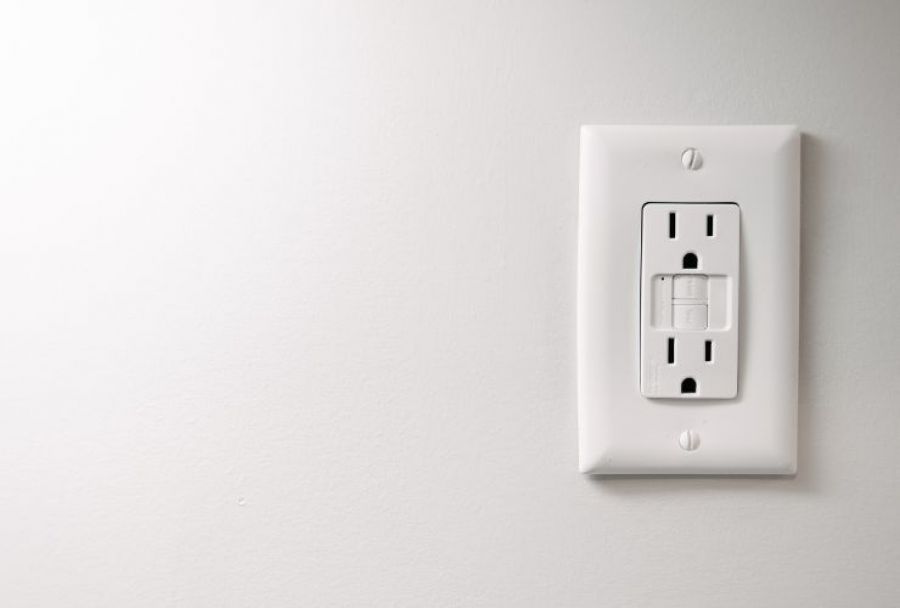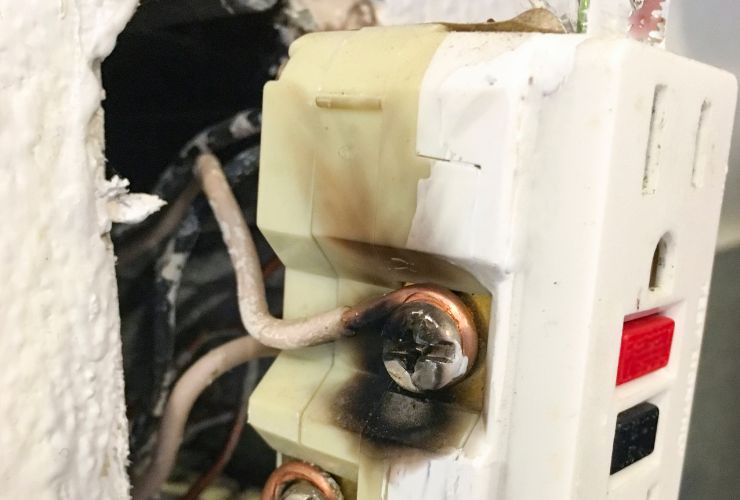GFCI Outlets Explained: Why They’re Essential for Safety

TLDR: Electricity makes life more convenient but poses risks like shocks and fires. Ground Fault Circuit Interrupter (GFCI) outlets are essential for safety. They prevent shocks, fires, and work well in wet areas. Compliance with codes and their versatility in applications make them crucial. GFCI outlets monitor and cut off power during imbalances. Testing them monthly is advisable, and older homes may need retrofitting. GFCI outlets are silent protectors ensuring electrical safety.
As the modern world becomes increasingly reliant on electricity, our homes and workplaces are filled with electrical devices and appliances that make life more convenient. While electricity undoubtedly improves our quality of life, it also poses inherent risks, such as electrical shocks and fires. To mitigate these dangers, electrical safety measures have evolved, and one of the unsung heroes in this realm is the Ground Fault Circuit Interrupter (GFCI) outlet. In this comprehensive guide, we will delve deep into the world of GFCI outlets, shining a spotlight on their significance and why they are indispensable for ensuring electrical safety.

The Invisible Protector: Why GFCI Outlets Matter
Electrical safety is a paramount concern that transcends the boundaries of our homes, workplaces, and public spaces. Accidental electrical shocks can result in severe injuries, while electrical fires can cause catastrophic damage to property and, more importantly, endanger lives. Amid these potential hazards, GFCI outlets emerge as silent yet vigilant guardians. Let’s delve into the primary reasons why GFCI outlets are essential:
1. Shock Prevention
GFCI outlets serve as a formidable line of defense against electrical shocks. Their primary function is to continuously monitor the flow of electricity through a circuit. If they detect even a minor imbalance in the current, as small as 4-6 milliamperes, they swiftly interrupt the circuit’s power supply. This rapid response can prevent fatal shocks, especially in wet or damp environments like bathrooms, kitchens, or outdoor areas.
2. Fire Avoidance
Beyond shock prevention, GFCI outlets contribute significantly to fire prevention. Electrical fires can result from damaged or faulty wiring, overloaded circuits, or short circuits. GFCI outlets help mitigate the risk of electrical fires by shutting off power when they detect abnormal electrical activity. This proactive measure can prevent overheating and potential ignition sources, thereby reducing the likelihood of fires.
3. Protection in Wet Locations
Wet environments are particularly susceptible to electrical accidents. Water is an excellent conductor of electricity, and even a minor fault in electrical devices can have disastrous consequences when combined with moisture. GFCI outlets are a lifesaver in areas prone to moisture, as they can quickly detect ground faults and cut off the power supply, reducing the risk of electrocution.
4. Compliance with Electrical Codes
Many building codes and regulations mandate the installation of GFCI outlets in specific locations within a building. Compliance with these codes is not just a legal requirement but also a common-sense approach to safeguarding occupants and property. Failure to install GFCI outlets where required can result in fines, failed inspections, and increased liability in case of accidents.
5. Versatile Application
One of the remarkable aspects of GFCI outlets is their versatility. They can be installed in various settings, making them suitable for both residential and commercial use. From kitchens and bathrooms to outdoor areas, garages, and industrial facilities, GFCI outlets offer flexible protection wherever electrical devices are used.
How GFCI Outlets Work
Understanding the inner workings of GFCI outlets is key to appreciating their significance in electrical safety. These outlets employ a straightforward yet highly effective mechanism to detect ground faults and cut off power. Here’s a detailed look at how they operate:
1. Current Monitoring: At the heart of every GFCI outlet lies a continuous monitoring system. It continuously tracks the electrical current flowing through it. To do this, the outlet splits the current into two paths: one through the hot wire and another through the neutral wire. Under normal circumstances, these currents should be equal, indicating that electricity is flowing smoothly.
2. Detecting Imbalance: When a ground fault occurs, such as a person coming into contact with an energized part of an appliance, an imbalance emerges in the current. In this scenario, some electricity flows through the hot wire but doesn’t return through the neutral wire. Instead, it finds an unintended path to the ground. This mismatch between the current in the hot and neutral wires, even if it’s a small amount, triggers the GFCI outlet.
3. Rapid Power Cutoff: As soon as the GFCI outlet detects this imbalance, it springs into action within milliseconds. It instantly cuts off the power supply to the circuit. This swift response prevents the possibility of electric shock or fire, as the faulty circuit is interrupted before it can cause harm.
4. Manual Reset: After a GFCI outlet trips due to a ground fault, it requires manual intervention to restore functionality. Users can accomplish this by pressing the reset button on the outlet. This crucial step ensures that the outlet can resume its protective function once the underlying issue is resolved.
FAQs About GFCI Outlets
Where should GFCI outlets be installed in a home?
GFCI outlets should be installed in areas where there is a higher risk of exposure to moisture. This includes bathrooms, kitchens, laundry rooms, outdoor outlets, garages, and crawl spaces. They are also recommended near swimming pools and hot tubs, as these locations are particularly susceptible to ground faults due to their wet environments.
Are GFCI outlets the same as AFCI outlets?
No, GFCI (Ground Fault Circuit Interrupter) outlets and AFCI (Arc Fault Circuit Interrupter) outlets serve different purposes. GFCI outlets are designed to protect against ground faults and electrical shocks, while AFCI outlets are designed to detect and prevent arc faults, which can cause electrical fires.
Can I replace a standard outlet with a GFCI outlet myself?
While replacing a standard outlet with a GFCI outlet is a straightforward task for those with electrical wiring experience, it’s important to exercise caution. If you’re unsure about your wiring skills or local electrical codes, it’s safer to hire a licensed electrician to perform the installation. This ensures that it’s done correctly and meets all safety requirements.
How often should I test my GFCI outlets?
It’s recommended to test your GFCI outlets at least once a month. You can do this by pressing the “test” button on the outlet, which should trip the outlet, and then pressing the “reset” button to restore power. Regular testing helps ensure that the GFCI outlets are functioning correctly and provides peace of mind regarding your electrical safety.
Are GFCI outlets required in older homes?
Building codes and regulations regarding GFCI outlets have evolved over the years. While older homes may not have had GFCI outlets when originally constructed, it’s often advisable and sometimes legally required to retrofit GFCI outlets in certain locations, especially those with increased moisture exposure. This retrofitting ensures that older homes are brought up to modern safety standards.
Protect Your Home & Your Family – Get Your GFCI Outlets Upgraded!
GFCI outlets stand as the silent guardians of electrical safety, diligently watching over our homes, workplaces, and public spaces. Their ability to swiftly detect and interrupt ground faults makes them indispensable in preventing electrical shocks and fires. Understanding their vital role and ensuring their proper installation in moisture-prone areas is essential for safeguarding lives and property. In the realm of electrical safety, GFCI outlets stand as a testament to the power of proactive protection, silently shielding us from unseen dangers.
On standby waiting to help you with a FREE Quote right now!
Recent Posts
CATEGORIES






